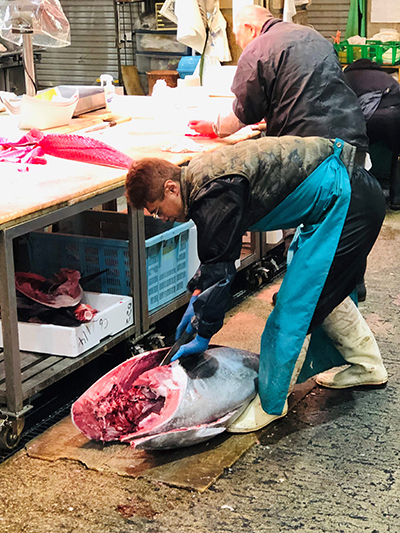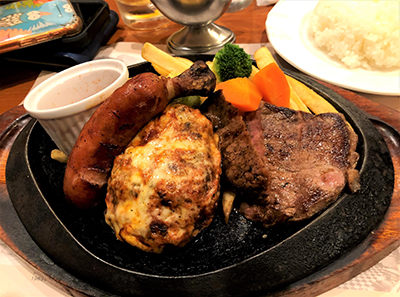Introduction
As an Executive Search and Talent Advisory consultant in the APAC region, I will be writing a series of articles on specific topics relating to the challenges that our clients face in the region, providing suggestions for developing business in a sustainable manner, and sharing specific insights based on actual case studies.
Overview
Japan is one of the most developed countries in the world, it is ranked 3rd in GDP globally and is the 2nd largest economy in Asia. Post WWII, Japan was a great economic force, growing rapidly from the 50s to the late 80s, becoming the second largest economy in the world. The country has created many world-beating brands such as Toyota, Honda, Sony, Nintendo, Hitachi, and Yamaha.
In recent times, there has been many pessimistic news about Japan: declining population, low GDP growth, lack of openness towards foreigners, and lack of innovation. There is also a lot of discussion in the media about the societal challenges that Japan is facing, such as the phenomenon of hikikomori (shut-ins), high suicidal rates amongst the young, and the old passing away and remaining undiscovered for a long period of time (kodukushi).
However, many people may have missed the positive things that are still happening in Japan, probably taking them for granted. It is a society with rather high income equality, very low crime rates (3rd safest in the world), very respectful society, highly organised and considerate (Google "Japan tsunami queues"), bullet trains that run very punctually, very high quality orientation and professionalism in everything that they do.
European businesses have always been facing challenges to penetrate the mature market of Japan. Despite the opportunities, it seems like Japanese companies mostly do business with other Japanese companies. Gaining even a small market share requires much investment and effort.
Use of middlemen/trust is the key
 A rather unique and probably challenging feature for European businesses will be the use of middlemen in almost all facets of the business.
A rather unique and probably challenging feature for European businesses will be the use of middlemen in almost all facets of the business.
Many European companies prefer to conduct business in a direct manner in order to have control in business, visibility in customer activities and perhaps to reap maximum profits. However, in Japan, this is almost impossible! The supply chains are built up based on mature, long-term, and trustful relationships. It takes a long time to build trust in Japanese society. However, once it is established, it almost never changed.
To successfully enter the market in Japan, first look for the right middleman. You might lose some profits along the way, but once you established the right relationships, you will be able to conduct long-term business in the country.
People buy from people that they trust. The “Western guy” who comes every few months is not seen as someone that they can fully trust. Instead, having a local manager who they can meet every now and then, and converse in their local language, gives the customers a great deal of comfort and peace in mind.
I recall an incident where a Danish company's business development manager started a discussion with their local Japanese distributor of "going direct" in the business. The initiation of the discussion caused much distress to the owners of the distribution company and almost destroyed the 30 years of positive relationship between the distributor and the principal. The Managing Director APAC who shared the story with me described that the business dropped drastically for a period of time and it took many months of "reparation work" plus a visit from the global CEO, who offers a "sincere apology" to the owners of the distributor, in order to rebuild the broken relationship.
Finding leaders for Western companies
 From our clients' feedback, it is a perpetual challenge to look for the right leaders in Japan. No doubt that similar challenges are present in other Asian countries, but the challenges are bigger in Japan due to several reasons.
From our clients' feedback, it is a perpetual challenge to look for the right leaders in Japan. No doubt that similar challenges are present in other Asian countries, but the challenges are bigger in Japan due to several reasons.
English is the primary barrier in finding executives who can work in Western companies. Even though Japanese borrows many English words (e.g. toilet = トイレ, tomato = トマト, soup = スープ, the list goes on) learnt from the German modernisation systems (medical, military, transportation, etc.) and relied much on American technology and finances to boost the economy, the society is still speaking and thinking in Japanese to a large extent. You cannot easily use English to conduct business, to order food (OK, in many modern cities there is an English menu that you can read and point) or to get a taxi (the same applies in Bangkok and Seoul). Therefore, senior executives who speak fluent English will be a rare find.
Next, during the boom years of the Japanese economy, the many keiretsu companies (closely knit groups of manufacturers, suppliers, distributors and banks) mostly hire the majority of graduates out of school and provide them lifetime employment (shushin koyo). It is unusual for people to change jobs (although this is changing slowly) or to gain experience outside of their comfort zones.
There is also a lack of international exposure among Japanese executives. Some of them may have an international focus (e.g. export managers). However, much of their work is done in Japan, instead of travelling to Western countries. Even if they are expatriated to another country, it is not uncommon that they work and live within their Japanese communities, and therefore, did not gain international exposure as intended.
Moreover, many Western companies have come and gone in Japan, due to the challenge of entering the market and growing the business. Competing with Japanese companies to get a piece of the pie requires a long-term approach, and companies simply don’t have the patience. Therefore, this creates distrust among Japanese executives towards the stability of foreign companies.
Westernised locals or Localised expats?
Given the challenges, what kind of leaders will be successful? There is no perfect answer and usually, the solution is either a Westernised local or a localised expat. Yet, both categories have their own challenges and require different approaches to minimise the risks.
A case in point: we were involved in coaching a German Managing Director who could not work well with the local team. Despite living in Japan for many years, learning the language and having a Japanese family, there are still challenges for the person to fully respect and follow the local way of doing things. This is not an uncommon situation as "blending in" may mean losing one's Western way of doing things. To minimise the risks, companies will need to ask for feedback from the local team and intervene early. If red flags are detected, coaching can be deployed to nip the problem at the bud. Of course, we have also seen successful Western executives who are able to build trust with the local team and are empowered by headquarters to make decisions according to the global strategy.
Another example is the local Japanese who prefers to do things his/her own way and therefore cannot gain full trust from the headquarters. One of our clients had to fire the local Managing Director as he was perceived as not sharing information transparently and communicating enough. This is often a classic case of different communication styles between Japanese and Western countries; yet, in many cases, there is insufficient attention given to this aspect. A proper selection process that focuses on leadership and communication style is usually very helpful to identify potential risks earlier and to avoid such problems.
There are Japanese executives who are quite Westernised. They might have studied, worked and lived in a Western country. They also prefer to work in Western companies as compare to the local ones. They understand the communication style of Westerners and they are comfortable to express themselves in English. However, it is a rare breed and they are often more demanding and will certainly cost more.
What companies need to bear in mind is that there is no perfect solution, and more time needs to be invested in order to help executives to be successful. Building trust with the locals can go a long way. Seeking to understand why the culture determines how business is done and not forcefully pushing down global initiatives. Using a customised selection process for local leaders, instead of just applying an American or German leadership profile, can also help to select more suitable leaders.
Seniority and hierarchy
Japan is a rather conservative society and "seniority and hierarchy" are important factors in conducting business. It has the highest number of octogenarian (>80 years old) in the world and 25% of its population (total: 100M) is >65 years old.
To open doors at the executive level, having a senior leader can often be easier as the younger may not be taken seriously or treated with respect. Therefore, Western companies may need to adjust their mindsets of having more senior managers in the Japanese workforce, as this is the local norm.
Conclusion
Being one of the most developed countries in the world, Japan is still a great place to do business and there are many opportunities in the market. European companies will increase their chance of gaining success by shifting their perspective of doing business. Desktop research or relying on third-party research is certainly insufficient to prepare for market entry. Taking time to understand business norms in Japan, having conversations with the right people (read: middleman), having a long-term trust-focused approach, and executing with the help of locals are certainly more sustainable approaches to win in Japan.
If you are interested to have a deeper discussion about Executive Search and Talent Advisory solutions in Japan, please contact Ricky Foo, our APAC Lead.
Images
Image 1 - One of the many fish vendors "middlemen" in the Osaka Fish Market. Cutting up the tuna and distributing the prized fish to the sushi restaurants in Osaka.
Image 2 - An example of a Westernized Japanese food (Yoshoku). On this platter, it includes Hambagu (hamburger steak), sausage, rice and vegetables.
 A rather unique and probably challenging feature for European businesses will be the use of middlemen in almost all facets of the business.
A rather unique and probably challenging feature for European businesses will be the use of middlemen in almost all facets of the business.  From our clients' feedback, it is a perpetual challenge to look for the right leaders in Japan. No doubt that similar challenges are present in other Asian countries, but the challenges are bigger in Japan due to several reasons.
From our clients' feedback, it is a perpetual challenge to look for the right leaders in Japan. No doubt that similar challenges are present in other Asian countries, but the challenges are bigger in Japan due to several reasons.